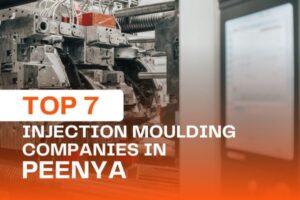Avoiding Common Injection Molding Defects: 7 Tips for Success
Injection molding, though an efficient method of manufacturing high-volume components, demands a high level of technical expertise. Despite the benefits of the injection molding process, there are so many variables at play that even a minor Injection molding defects in the early stages of product development can compromise the product integrity and have serious consequences.
Speed and cost-efficiency of the product development process can get hampered if a Injection molding defects arises and if left unchecked, it can further shorten the lifespan of the product. There can be multiple reasons for injection molding defects, like irregular wall thickness, production errors, quality control issues, poor designing and more. Therefore, adopting a proactive risk-mitigation approach during the product development process is crucial to minimize injection molding defects.
Common Injection Molding Defects
1. Flow Lines
Flow lines appear as off-color streaks or patterns on the surface of a part. They result from variations in the movement of molten plastic during molding, leading to uneven solidification rates. These defects usually stem from low injection speed or pressure, or from the plastic flowing through mold sections with varying wall thicknesses.
To avoid flow lines, maintain consistent wall thickness and apply proper lengths for chamfers and fillets. Placing the gate in a thin-walled section of the mold cavity can also help reduce flow line formation.
2. Sink Marks
Sink marks are indentations or depressions on the surface of molded parts, particularly in thicker sections. They occur when thicker areas cool and shrink at different rates compared to outer layers. This uneven shrinkage is often caused by insufficient material flow or cooling.
You can reduce sink marks by minimizing wall thickness variations, optimizing cooling time, and adjusting gate temperatures. Ensuring correct rib and wall thickness during design helps minimize these marks and improves part strength.
3. Surface Delamination
Delamination causes the part’s surface to peel into thin layers, resembling a flaky coating. This occurs when contaminants in the resin prevent proper bonding with the plastic. Overuse of mold release agents can also cause delamination.
To prevent this, increase mold temperatures and optimize the ejection system to reduce reliance on release agents. Additionally, always dry plastic materials thoroughly before molding.
4. Weld Lines
Weld lines form when two streams of molten resin meet at a hole or obstruction in the mold and fail to bond properly. These lines weaken the final part and reduce its durability.
To prevent weld lines, ensure the molten plastic doesn’t solidify prematurely. Increase injection speed, pressure, and resin temperature. Choosing resins with lower viscosity and melting points and redesigning the mold to remove partitions can also help.
5. Short Shots
Short shots occur when the molten plastic fails to completely fill the mold cavity, leaving the part incomplete. Causes include restricted flow due to blocked gates, trapped air, or high material viscosity.
Prevent short shots by raising mold temperatures, choosing materials with optimal viscosity, and adding vents to improve air escape during molding.
6. Warping
Warping refers to unwanted twists or bends in a molded part, often caused by uneven cooling that creates internal stress. Non-uniform wall thicknesses or improper cooling cycles typically cause this defect.
You can prevent warping by designing for uniform wall thickness and allowing parts to cool slowly and evenly. Material choice also matters—semi-crystalline plastics tend to warp more than amorphous ones.
7. Jetting
Jetting presents as visible streaks or squiggly lines on the part surface. It occurs when a rapid resin stream enters the mold and begins solidifying before the cavity fills.
To avoid jetting, place the injection gate so resin flows along the mold’s shortest axis. Lowering injection pressure and increasing mold and resin temperatures can help ensure gradual and complete filling.
8. Conclusion
By understanding these common injection molding defects and their causes, manufacturers can significantly improve part quality. Proactively optimizing mold designs, fine-tuning process parameters, and maintaining equipment reduces the likelihood of defects. Taking these steps early in the process enhances reliability, reduces costs, and increases customer satisfaction across injection molding projects.




